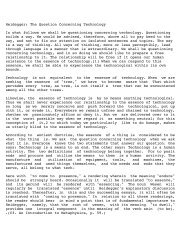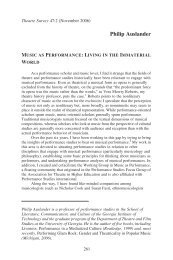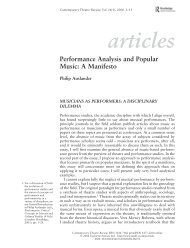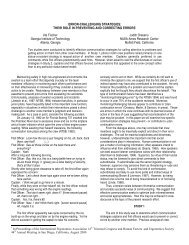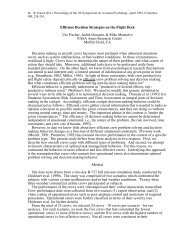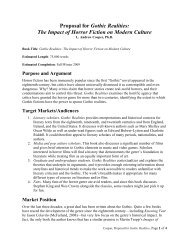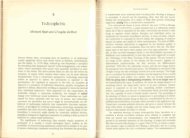INTERACTION DESIGN PRINCIPLES FOR INTERACTIVE ...
INTERACTION DESIGN PRINCIPLES FOR INTERACTIVE ...
INTERACTION DESIGN PRINCIPLES FOR INTERACTIVE ...
You also want an ePaper? Increase the reach of your titles
YUMPU automatically turns print PDFs into web optimized ePapers that Google loves.
When we direct our attention to a picture, initially our eyes skim the picture and<br />
scan it superficially for prominent features. In this manner, the rain gets an<br />
orientation to the total context. In a second step, we view the prominent features<br />
more exactly and more intensively. The details do not follow until afterward. The<br />
more structure the screen composition establishes, the simpler the comprehension.<br />
The more unstructured the screen is, the more the eye must seek, the more energy<br />
the brain must expend to define a structure, and the more unwilling the user<br />
becomes to work with the picture” (2004).<br />
Many iTV applications require an additional space in which to present enhanced<br />
content. The most appropriate way to configure this iTV space, however, is a challenge<br />
for designers. In recent years, two different layout conventions – overlays and the<br />
embedded “L” or split-screen design, have emerged in the realm of iTV interface design.<br />
Table 5.1 compares the advantages and disadvantages of each approach (Lamont, 2003a).<br />
Table 5.1 Comparison of Overlay vs. Embedded Layouts<br />
Design Advantages Disadvantages<br />
Overlay Size of TV window is the<br />
same as regular TV<br />
Content feels more integrated<br />
into the show<br />
Close proximity of TV and<br />
content may facilitate divided<br />
attention<br />
Close proximity of TV and<br />
content may enhance memory<br />
for show<br />
Embedded Easy to separate TV and<br />
content when viewing<br />
Easy to focus on content or<br />
watch show<br />
Separation of content and TV<br />
may facilitate memory<br />
Separation of content from<br />
TV may facilitate divided<br />
attention<br />
153<br />
Distracting because content<br />
on top of TV<br />
Users try to look through<br />
content to see TV<br />
Close proximity of TV and<br />
content may inhibit focused<br />
attention<br />
Size of TV window reduced<br />
Viewer can more easily<br />
multi-task and direct<br />
attention in 2 locations<br />
Importance may be given to<br />
content when not necessary<br />
Separated elements make<br />
focused attention difficult



